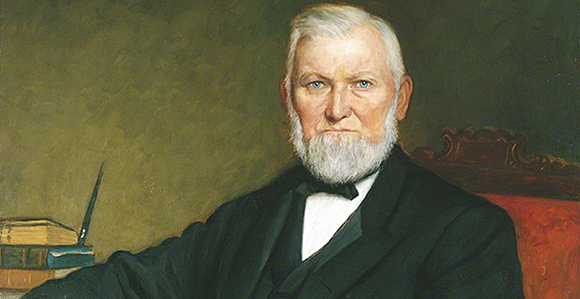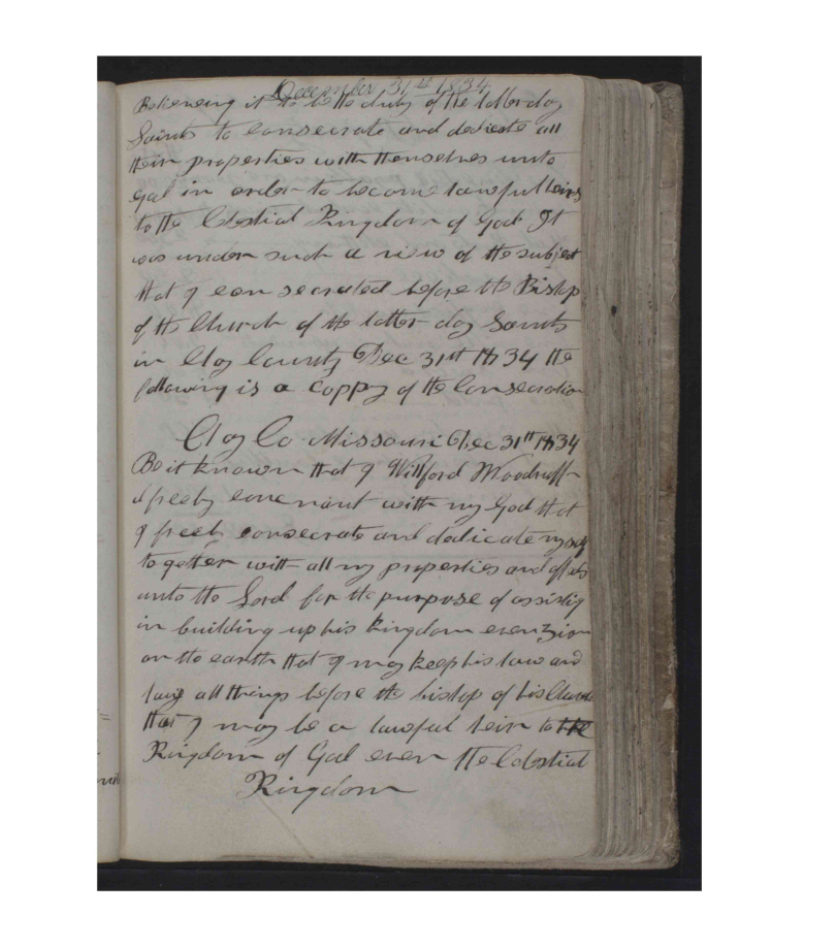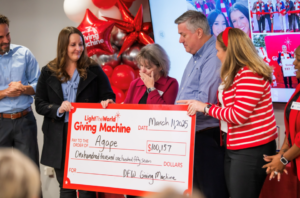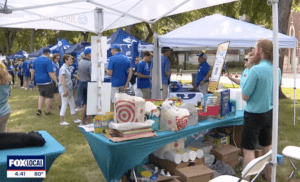A New Look at Church History: The Wilford Woodruff Papers Project
Featured Artwork: Wilford Woodruff, by H. E. Peterson.
Wilford Woodruff recorded the events of not just his life, but of early Church history, from his baptism in 1833 to his death as the fourth President of the Church of Jesus Christ of Latter-day Saints, in September 1898. On March 1, what would have been Wilford Woodruff’s 214th birthday, The Wilford Woodruff Papers Foundation launched its new website to publish the first phase of the Wilford Woodruff Papers Project. Two members of the Board of Directors, Matt Kotter and Kristy Taylor, are in the Texas Alliance Stake, and several volunteers and donors live in the Alliance and Colleyville Stakes.
What is the Wilford Woodruff Papers Project?
The Wilford Woodruff Papers Foundation is the non-profit organization behind the Wilford Woodruff Papers Project. The Foundation’s mission, and the purpose of the Project, is to collect, digitally preserve, transcribe, index, and publish all of Wilford Woodruff’s extant documents. Think Joseph Smith Papers, but ten times as many records. President Woodruff left behind about 30,000 letters sent and received, almost 7,000 pages of journals, approximately 3,500 discourses, plus autobiographies and legal documents. The Wilford Woodruff Papers Project is now one year into this ten-year project of digitizing and transcribing these documents, and on 1 March, we published the first 20 percent of his letters, 20 percent of his journals, and one autobiography, for free and accessible to all on the Project’s website.
Who is involved in the Project?
Most members of the team are volunteers with just a few paid staff positions, all of it supported by donors. The head of our team is our Executive Director, Jennifer Mackley, author of Wilford Woodruff’s Witness: The Development of Temple Doctrine, former historian for the Woodruff Family Association, and the greatest living expert on Wilford Woodruff. Her co-founder in the Foundation is Don Parry, BYU professor, translator of the Dead Sea Scrolls, and author of 175 Temple Symbols and their Meanings. Among our other team members are Woodruff family descendants, a former director of the Mission Department, a former Young Men’s General President, members of the Church History Department, a former director of the Church’s Public Affairs Department and Family History Department, a former director of LDS Philanthropies, and President Nelson’s Executive Secretary (also a Woodruff). Our Executive Editor is Steve Harper, BYU Professor and an editor on Saints and the Joseph Smith Papers, and our editorial team includes several former members of the Joseph Smith Papers team.
What will I find there?
As of March 1st, the website has published President Woodruff’s first autobiography, as well as journals and letters through the death of the Prophet Joseph Smith. When you get on the website, you will see the original document side-by-side with the transcription. Visitors will be able to see Wilford’s unique handwriting and the drawings he made in his journals and letters. The documents are also indexed and searchable. So, if you’re reading a letter that mentions Oliver Cowdery, you’ll be able to click on the name and be taken to a short biography of Oliver; or if you are reading about Wilford’s mission in Maine, you’ll be able to click on the name of the island he was on, and you’ll be taken to a map of the Fox Islands in Penobscot Bay. You’ll also find a timeline of the prophet’s life, and information about the team behind the project.
What will you discover?
Wilford was baptized in 1833 and did not die until 1898, and he wrote something nearly every day during those years in between. He recorded all the major events of early Church History—Zion’s Camp, the dedication of the Kirtland Temple, Haun’s Mill, the deaths of Joseph and Hyrum, the law of consecration, the exodus from Nauvoo, settling the Salt Lake Valley, Mountain Meadows, polygamy, the dedication of the Salt Lake Temple (and several others)–and was able to give us a personal account. When my mother and I started volunteering with the editing process, we read a letter from Phebe Woodruff as she wrote to her husband Wilford to tell him about their young daughter Sarah’s death. The letter was tender and heartbreaking, just the way we would expect a young couple to write to each other with terrible news. We then moved on to Wilford’s first autobiography, Leaves from my Journal, and his description from July 1839 when the Prophet Joseph healed all the sick in Nauvoo. I had heard this story many times—Nauvoo was built on a swamp and when the early Saints moved in they all got malaria and were in horrible condition in tents and makeshift houses as they built up the city as fast as they could. We always hear it told as a great day of miracles, and is surely was, but to hear Wilford Woodruff’s telling, you get a little bit of a different picture—Joseph had things to do and he’d had enough of waiting around for everyone to get better, so it was time to do something to get the people up and back to work. So he did. As we read, we still saw the faith required to heal everyone, but also the urgency to get up and get moving.
Like I’ve discovered, you may learn what a long process it is to establish the Gospel in the latter-days, and that it’s not over yet. It has brought new meaning to learning “line upon line and precept upon precept.” President Woodruff announced his temple revelation in April 1894 General Conference and said, “We have felt that there was more to be revealed upon the subject than we had received.” We can take a lot of comfort in knowing that the Lord was then and is still now guiding us one step at a time and that there is more knowledge to come.
Where can you learn more?
Visit the project’s website, www.wilfordwoodruffpapers.org to see all the great things that are happening. If you’re interested in getting involved, you can find that information on the website, as well. You can also listen to our first two podcasts, broadcast through FairMormon, https://www.fairmormon.org/blog/category/podcast (FAIR Cast Episode 27 and Episode 28).








